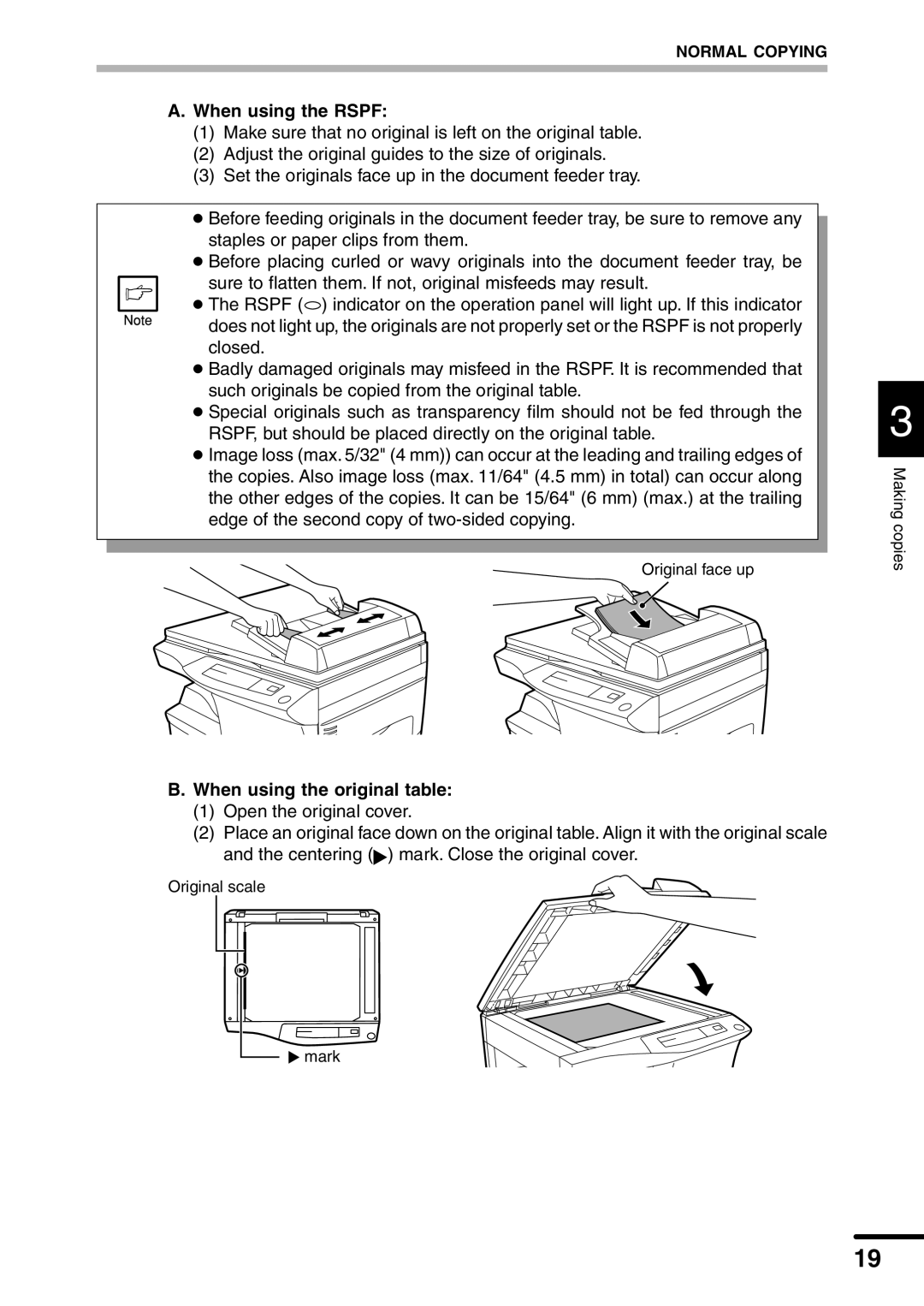
NORMAL COPYING
A. When using the RSPF:
(1)Make sure that no original is left on the original table.
(2)Adjust the original guides to the size of originals.
(3)Set the originals face up in the document feeder tray.
●Before feeding originals in the document feeder tray, be sure to remove any staples or paper clips from them.
●Before placing curled or wavy originals into the document feeder tray, be sure to flatten them. If not, original misfeeds may result.
●The RSPF (![]() ) indicator on the operation panel will light up. If this indicator does not light up, the originals are not properly set or the RSPF is not properly closed.
) indicator on the operation panel will light up. If this indicator does not light up, the originals are not properly set or the RSPF is not properly closed.
●Badly damaged originals may misfeed in the RSPF. It is recommended that such originals be copied from the original table.
●Special originals such as transparency film should not be fed through the RSPF, but should be placed directly on the original table.
●Image loss (max. 5/32" (4 mm)) can occur at the leading and trailing edges of the copies. Also image loss (max. 11/64" (4.5 mm) in total) can occur along the other edges of the copies. It can be 15/64" (6 mm) (max.) at the trailing edge of the second copy of
Original face up |
3
Making copies
B. When using the original table:
(1)Open the original cover.
(2)Place an original face down on the original table. Align it with the original scale and the centering (![]() ) mark. Close the original cover.
) mark. Close the original cover.
Original scale
![]() mark
mark
19
